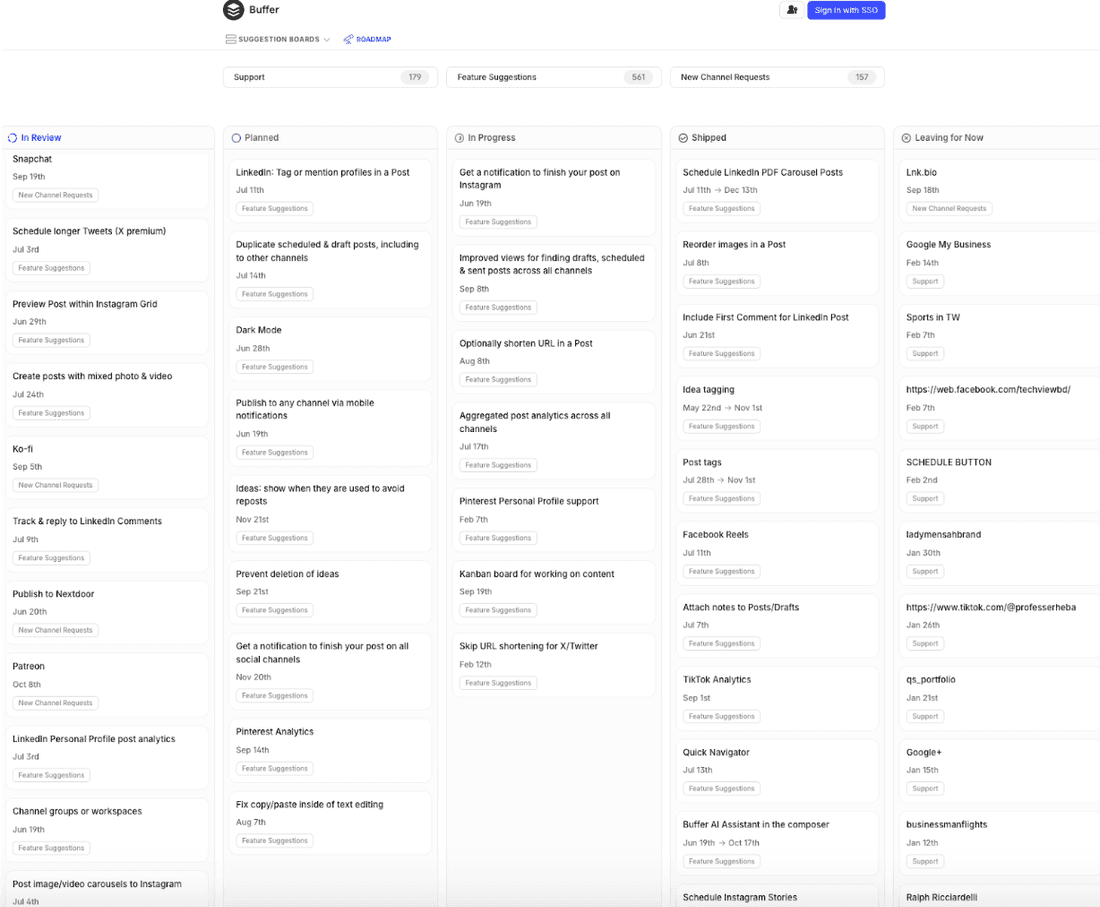Crafting the Perfect Product Roadmap: Best Practices and Pitfalls to Avoid
For product managers and startup founders, product roadmapping goes beyond merely planning a project — it’s a compass that points the way for the entire team.
But not all product roadmaps are effective. In fact, building a roadmap that lasts longer than a few sprints can be a real challenge. Unless you read this post, of course.
In this comprehensive guide, you’ll see actionable advice, real-world examples, and common missteps to steer clear of, ensuring you create a roadmap that not only charts a course but navigates it to victory.
Key Points
- Understand the strategic importance of clear product roadmaps.
- Implement the best practices that ensure your roadmap stays relevant and actionable.
- Learn from the mistakes of others to steer clear of common pitfalls.
- Hone your skills with insights from seasoned product managers.
The Ultimate Product Roadmap Best Practices
Product roadmaps are a single source of truth about your product’s direction. If you want to do it, you have to have a nuanced understanding of your market, your product, and your company.
And well… That’s the homework you should complete before attempting to roadmap your SaaS.
After that, though, it’s getting a bit easier. Over the years, certain practices have emerged as reliable indicators of a roadmap’s success.
Below, we explore key best practices that you should consider integrating into your roadmap strategy.
Best Practice 1: Align With Your Product Vision
Your product roadmap should serve your vision, not the other way around. The vision is a clear, high-level view of what your product aims to achieve.
Every feature, enhancement, or project on your roadmap should directly connect to this vision. If it doesn’t, question its importance and relevance.
Remember, a vision that’s not supported by the operational plan will remain but a dream.
Buffer’s roadmap perfectly depicts a roadmap that applies their product vision (to become a sharing standard for the web):

Primarily, their roadmap includes expanding Buffer’s functionality to new channels and platforms. Also, you might notice they prioritize their collaboration capabilities.
It’s hard to spot even one feature that doesn’t somehow tie up to the product vision. When planning your roadmap, you should aim for the same.
Best Practice 2: Prioritize Ruthlessly
In a perfect world, your team could tackle every request. In reality, resources are finite, and so is time. Prioritizing effectively means saying “no” to good ideas to make space for great ones. This can be a difficult but necessary step in ensuring your roadmap aligns with your priorities and timelines.
For example, on GitHub’s product roadmap, we can see that in 2024, the company prioritizes a security-first strategy, leading to more tasks focused on increasing the safety of their product:

This is also a great example of product roadmapping serving as a business tool. By planning out the tasks bringing you closer to the primary goal for the year, everyone in the team can feel a part of your product’s success.
Best Practice 3: Keep it Flexible, Yet Focused
Innovation can be unexpected. Your roadmap should accommodate change while maintaining focus. This means building in review periods, staying close to customer feedback, and allowing for flexibility where it doesn’t cause a strategic shift.
Ongoing customer development sessions helped HubSpot shift their roadmap when they realized that a more comprehensive integration with Salesforce™️ CRM was crucial for their high-end enterprise customers.
Best Practice 4: Collaborate Across Functions
Product development is a team sport that requires input from across your organization. Engage with sales, marketing, customer support, and engineering to build a truly holistic roadmap, addressing your product needs and opportunities.
Collaborative roadmaps include diverse viewpoints and showcase you truly care about the alignment between the product and the business.
Say you’re planning the next year for your fitness app. Your marketing team conducted a survey that states more customers expect VR experiences to be included in apps like yours.
This needs you to collaborate both with developers and marketers. In Fibery, you can gather everyone involved in 1 place and discuss the roadmap.
And you want to know the best part? You can do so without moving an inch away from your comfortable desk setup (cause it’s all online). Wanna try?
Best Practice 5: Communicate Clearly
A well-crafted roadmap loses its power if you don’t communicate it effectively. The key here is to make sure everyone understands:
- Why do you include certain elements in the roadmap
- How do you plan to achieve them
To leave no place for confusion, be transparent about your process, your priorities, and the reasoning behind each decision.
This not only keeps stakeholders informed but also sets realistic expectations about what your product will — and won’t — deliver.
The PM’s Hot Take
Ah, the grand illusion of the ‘ultimate’ product roadmap, where every turn is meticulously planned, and success is just a few sprints away. The truth? It’s more like a wild guess wrapped in a pretty PowerPoint. Sure, we talk about strategic importance, actionable advice, and learning from others’ mistakes. But let’s be real: at the end of the day, it’s about making educated guesses and hoping we don’t veer off the cliff. Because in the ever-changing tech landscape, today’s roadmap is tomorrow’s scrap paper. Here’s to navigating the chaos with a bit of grace and a lot of caffeine.
Pitfalls to Avoid
While these practices are the foundation of a robust product roadmap, several common pitfalls can mess up even the most carefully planned strategy.
Avoid these missteps to keep your roadmap on the path to success:
Overcommitting
Don’t bite more than you can chew. Promising more than your team can deliver in an attempt to please stakeholders will only lead to missed deadlines and a loss of credibility.
Instead, use prioritization frameworks to assess which features are the most impactful for your product and plan accordingly. This will also help you communicate your decision to stakeholders.
Neglecting Regular Review
Failing to review and update your roadmap at regular intervals can result in a document that quickly becomes outdated and irrelevant.
Schedule recurring roadmap review sessions to ensure everyone’s aligned with the business goals and the team’s expectations.
Ignoring Market Changes
Market forces are changing. Constantly. Your roadmap must be agile enough to respond to shifts in competition, technology, and consumer behavior.
When you see sudden changes in your market or in customer demand, it’s crucial to communicate your concerns to other team members and ensure your roadmap remains relevant.
Failing to Segment Audiences
A one-size-fits-all approach rarely fits anyone perfectly. Tailor sections of your roadmap to address the unique needs of different customer segments.
Use tools like user interviews, surveys, or usability tests to help you with the segmentation of your roadmap.
Losing Sight of the Big Picture
Small features can’t destabilize the high-level vision your roadmap should serve. Ensure individual elements contribute to the overarching goals.
Also, don’t feel forced to stick to any “right” version of your roadmap. If you see a feature as a roadblock to the product’s success — consider removing/postponing the feature.
Conclusion
By implementing these best practices, steering clear of common pitfalls, and staying sensitive to the insights and needs of your team and your market, you can craft a product roadmap that not only guides but leads your product to its full potential.
And if you need a tool to plan your next successful product roadmap, here’s a free trial to Fibery. You can build your roadmap alone there or collaborate with other team members to plan your product’s next steps toward fulfilling your vision.
Psst... Wanna try Fibery? 👀
Infinitely flexible product discovery & development platform.